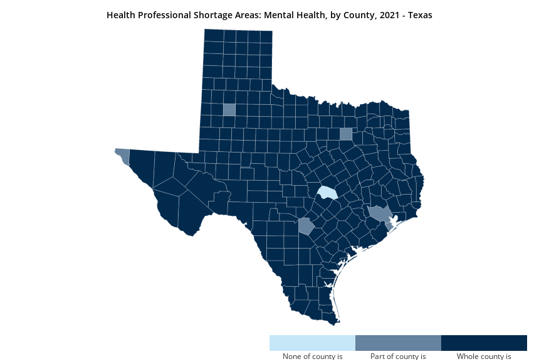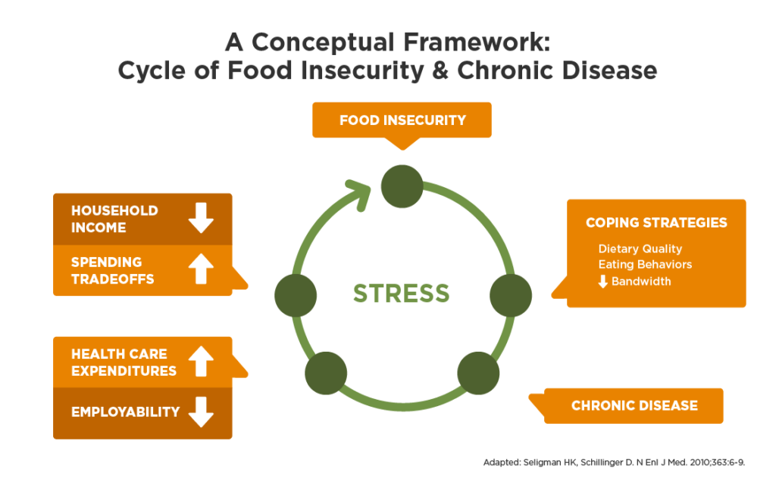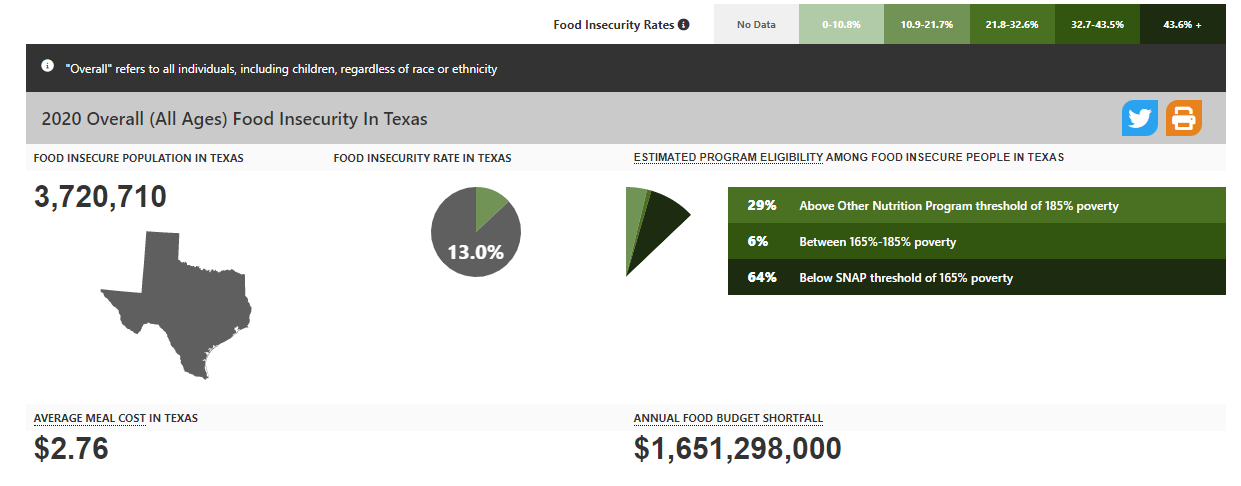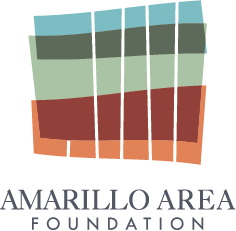The Texas Panhandle is fortunate to be the home of high-quality healthcare, though the pandemic did highlight two areas of opportunity for better well-being: mental health and food insecurity. By focusing on these two areas, the Foundation hopes to improve health outcomes for many generations.
Mental Health
supporting & partnering with organizations
By the numbers
- 1 in 5 American adults will have a diagnosable mental health condition in any given year.
- 57% of adults experiencing a mental illness did not review mental health services in the past year. (MMHPI)
- High school students with depression are more than 2x more likely to drop out than their peers. ( NAMI)
- 50% of all lifetime mental illness begins by age 14, 75% by 24. ( NAMI)
- Suicide is the 2nd leading cause of death for people ages 10-34.
75
30
80
Coming out of the Pandemic
-
Underlying indicators of depression are more than three times higher than the pre-pandemic baseline, affecting more than one-fifth of Americans.
-
The number of people seriously considering suicide has doubled, and the rate of pediatric emergency room visits for suicide is now double pre-pandemic levels, with the greatest increases seen among adolescent girls.
-
A major contributor to this mental health crisis is that we do not detect and treat mental health needs until eight to ten years after symptoms emerge if at all. Instead, we wait until suffering becomes visibly obvious, too often in the form of a crisis.
Source: Meadows Mental Health Policy Institute

What does this mean for the Foundation?
Looking to support and partner with organizations that are addressing mental health by:
- improving access and early detection to include those in our most rural and underserved areas
- reducing stigma
- expanding use of telehealth
- increasing mental health workforce and collaborative care

Food Insecurity
Beyond the food
The U.S. Department of Agriculture (USDA) defines food insecurity as a lack of consistent access to enough food for an active, healthy life, and also points out that, “It is important to know that hunger and food insecurity are closely related, but distinct, concepts. Hunger refers to a personal, physical sensation of discomfort, while food insecurity refers to a lack of available financial resources for food at the level of the household.
“Food insecurity describes a household’s inability to provide enough food for every person to live an active, healthy life. Food insecurity is one way we can measure and assess the risk of hunger.”
-Feeding America
Primary cause of food insecurity is low income
Poverty and food insecurity are social determinants of health and are associated with some of the most serious and costly health problems in the nation.
Food insecure and low income are vulnerable to poor nutrition and obesity due to additional risk factors:
- Lack of access to healthy affordable foods
- Cycles of food deprivation and overeating
- High levels of stress, anxiety, depression
- Fewer opportunities for physical activity
- Greater marketing of obesity-promoting products
- Limited access to health care
Household food insecurity is a strong predictor of higher healthcare utilization and increased healthcare cost
- This translates to $77.5 billion in excess annual healthcare expenses nationally.
-
- Food running out
- Skipping meals
- Choosing between food and medicine
- Postponing medical care
- Poor health outcomes
- Higher health care use and costs
Source: FRACS Hunger and Health series
- Increased risk for negative mental health impacts
- Inadequate intake of nutrients
- Total healthcare costs increase steadily with increased severity of household food insecurity

Looking to support and partner with organizations addressing food insecurity by:



